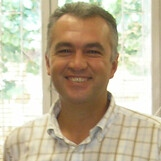Algae Biotechnology: Green Chemistry for High-Value Products
A special issue of Life (ISSN 2075-1729). This special issue belongs to the section "Microbiology".
Deadline for manuscript submissions: 14 June 2024 | Viewed by 5177
Special Issue Editors
Interests: microalgae; bio-factory; high-value products; metabolic engineering
Special Issues, Collections and Topics in MDPI journals
Interests: microalgae; carotenoids; biostimulants; omega-3 fatty acids,; genetic engineering
Interests: enzyme biotechnology; molecular enzymology; enzyme engineering; protein downstream processing; enzyme biosensor; enzybiotics; algae biotechnology; structure-based drug design; immobilized enzymes; therapeutic enzymes; regulatory affairs in biotechnology; intellectual property law in biotechnology
Special Issues, Collections and Topics in MDPI journals
Special Issue Information
Dear Colleagues,
Algae are primary producers in the global carbon cycle and are able to exploit light and convert inorganic compounds into organic ones, producing oxygen as a side product. More than half of the photosynthesis performed on Earth is completed by algae, as part of a heterogenic group including cyanobacteria, green algae, and other eukaryotic algae.
It is well known that algae play a central role—as alternatives to plants—to ensure food, raw materials and energy for a growing population. Wastewaters and flue gas can be used to ensure nutrients and CO2 for carbon fixation in a perfect “green circular economy”.
Being easy to manipulate, cheap, and fast growing, algae represent a good solar-driven cell factory for the production of several high-value bio-products. Algae are rich in proteins, lipids, carbohydrates and vitamins and, for that reason, mainly supply the food–feed and cosmetics industries. In recent years, several advantages have been made in the use of algae for bio-factory or bio-refinery, offering promise to overcome limitations in algal cultivation to achieve cost-effective production.
This Special Issue aims to collect original research articles, reviews and short communications regarding the use of algae in bio-factory or bio-refinery approaches, or in phytoremediation, considering the advantages of boosting algal growth.
Dr. Flavio Martini
Dr. Nikolaos Labrou
Dr. Federico Perozeni
Guest Editors
Manuscript Submission Information
Manuscripts should be submitted online at www.mdpi.com by registering and logging in to this website. Once you are registered, click here to go to the submission form. Manuscripts can be submitted until the deadline. All submissions that pass pre-check are peer-reviewed. Accepted papers will be published continuously in the journal (as soon as accepted) and will be listed together on the special issue website. Research articles, review articles as well as short communications are invited. For planned papers, a title and short abstract (about 100 words) can be sent to the Editorial Office for announcement on this website.
Submitted manuscripts should not have been published previously, nor be under consideration for publication elsewhere (except conference proceedings papers). All manuscripts are thoroughly refereed through a single-blind peer-review process. A guide for authors and other relevant information for submission of manuscripts is available on the Instructions for Authors page. Life is an international peer-reviewed open access monthly journal published by MDPI.
Please visit the Instructions for Authors page before submitting a manuscript. The Article Processing Charge (APC) for publication in this open access journal is 2600 CHF (Swiss Francs). Submitted papers should be well formatted and use good English. Authors may use MDPI's English editing service prior to publication or during author revisions.
Keywords
- algae
- microalgae
- metabolic engineering
- high-value products
- bio-factory
- bio-refinery
- phytoremediation








